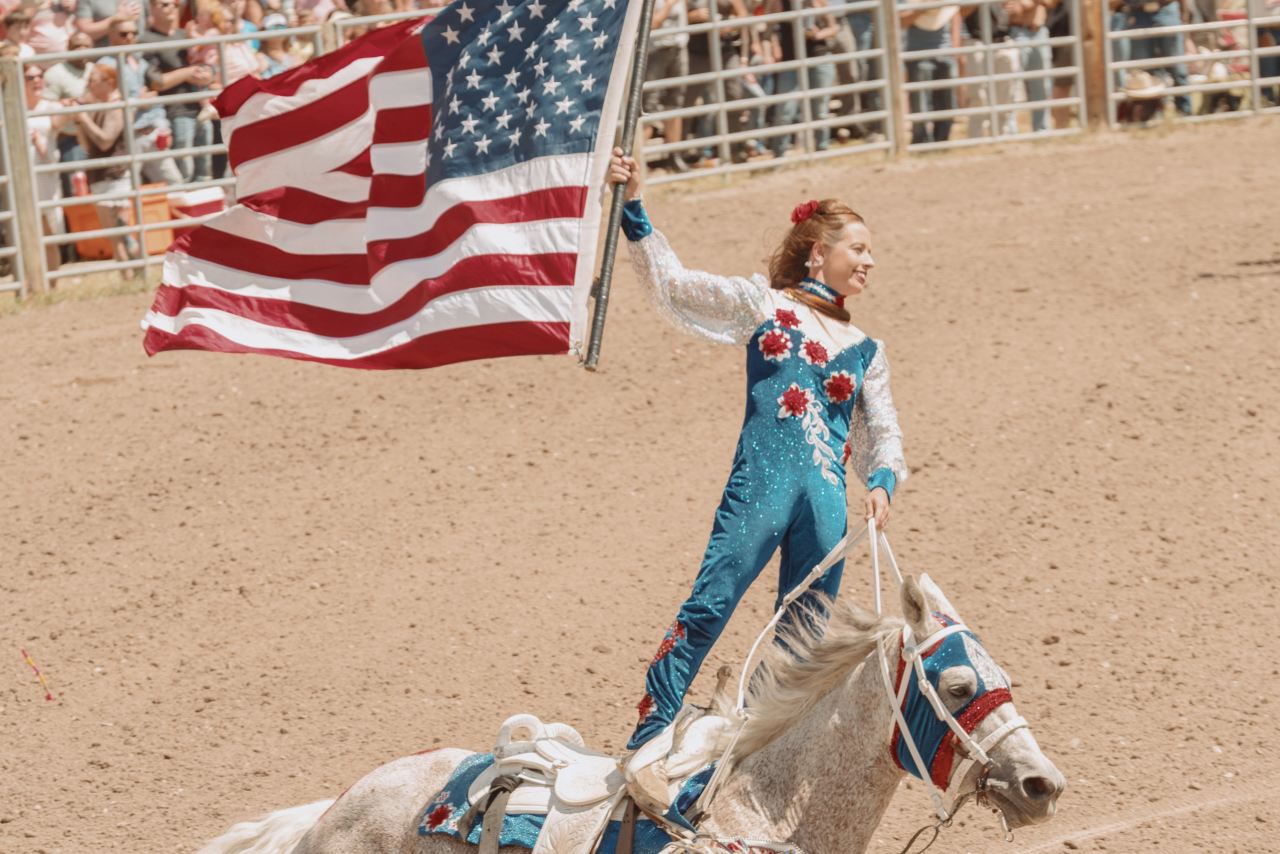
A Celebration of Tradition and Community in Montana’s Rodeo Culture
In the heart of Augusta, Montana, a star-spangled trick rider balances atop a white horse, clutching the American flag in her right hand as she circles the dusty rodeo arena. The scene is reminiscent of Lady Liberty, with thousands of spectators cheering from the stands. From local ranchers in hard-earned cowboy hats to children in pint-sized embroidered leather boots, the crowd is a testament to the deep-rooted connection between the community and the rodeo.
It's a glorious summer day in Augusta, Mont., where the air is filled with the scent of corn dogs and the sound of laughter. The town feels like it's celebrating the Fourth of July—except it's June 29. For Montana, every day during its peak rodeo season feels like a celebration of its cattle-driving legacy, a tradition that has endured for over a century. Between Memorial Day and Labor Day, dozens of rodeos take place across the state, offering visitors an array of events such as bronco and bull riding, barrel racing, cattle roping, and even some two-stepping and jitterbugging. It's a lifetime of Americana packed into one season.
Rodeo traditions inspire pride across the country, but in Montana, they hold a special significance. Rodeo, derived from the Spanish word "rodear" meaning "to encircle," originated in cowtowns where cattle drivers would unwind after seasonal roundups. While the exact birthplace of rodeo remains debated, several towns lay claim to being the first. Cheyenne, Wyoming, claims to have hosted the first rodeo, known as the "Daddy of 'em all." Santa Fe, New Mexico, and Deer Trail, Colorado, also make similar claims, while Prescott, Arizona, might be home to the world's first professional event in 1888. Texas, with over 100 rodeos, now draws major pop stars and generates millions in revenue.
However, what makes Montana's rodeos unique is their deep community ties. These events are not just about spectacle; they are about the people who live, work, and play in these small towns. The state legislature recently designated American Rodeo as Montana’s official sport, a move that reflects the cultural importance of this tradition. Additionally, a new bill aims to promote rural, undervisited communities by funneling more funds into their development.
Augusta, located in Lewis and Clark County at the base of the Rocky Mountain Front, is a prime example of this community spirit. The annual Augusta American Legion Rodeo, now in its 88th year, transforms the town from a population of 300 to 4,000. Tia Troy, whose family has owned Allen’s Manix Store for half a century, recalls how in the 1930s, the local American Legion chapter used just $3.75 to buy beer and still hosted a rodeo. “This is a place to kick up your heels for sure,” said Troy.
Today, the event has expanded to three days, featuring live music, a Wapiti Fun Run, and a parade. Vendors sell jewelry, clothing, birdhouses, and quilts, while families enjoy games like cornhole. The festivities build up to Rodeo Sunday, where riders face off against wild broncos and bulls. The tension is palpable as contestants hang on for dear life, with eight seconds feeling like an eternity. When a rider stays on and the buzzer sounds, it's a moment of glory shared by everyone in the stands.
Other events, like steer wrestling and barrel racing, are equally thrilling, showcasing the speed and skill of the athletes. While Augusta doesn't feature "mutton bustin’"—where children ride sheep bareback—other rodeos around Montana offer this exciting event for younger audiences.
“When you come to Augusta, it’s one of those places that transports you back [in time] in the most perfect way possible,” said Troy, who moved back to the town several years ago. “It’s like how life is meant to be: It’s small, it’s charming, it’s friendly.”
Despite the influx of high-end developments, such as the Montage resort and the One&Only Moonlight Basin, old-school rodeo traditions continue to thrive in places like Augusta. Just a few weeks later, the Big Sky PBR takes place, just five miles from the mansions and helipads of Yellowstone Club. There, the world's top professional bull riders put on their chaps one leg at a time—just like everyone else.
For those looking to experience more of Montana’s rodeo culture this season, there are several events to consider:
- Cascade Pro Rodeo: August 8-10 in Cascade. This younger rodeo puts a modern spin on traditional events, with an opening night themed “Tough Enough to Wear Pink.”
- Labor Day Rodeo: August 31-September 1 in White Sulphur Springs. A Central Montana staple for over half a century, featuring the stately Castle Mountains as a backdrop.
- Montana’s Biggest Weekend: August 29-September 1 in Dillon. Two days of pro rodeo followed by a Clint Black concert and parade.
These events offer a glimpse into the heart of Montana’s rodeo culture, where tradition meets community in a celebration of the American spirit.
